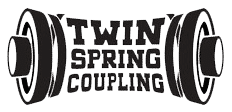Selecting the Right Couplings for Mining Machinery – Considerations and Guidelines
Table of Contents
Choosing appropriate couplings is crucial for the optimal performance and longevity of mining machinery. This guide outlines key factors to consider when selecting couplings for mining applications.
Understanding Coupling Requirements in Mining
Mining environments present unique challenges that couplings must withstand:
- Harsh operating conditions with exposure to dust, debris, and moisture
- High shock loads and vibrations
- Frequent start-stop cycles
- Potential misalignment between connected components
- Need for reliability to minimize costly downtime
Key Considerations for Coupling Selection
1. Operating Environment
The mining environment significantly impacts coupling choice:
- For abrasive conditions, enclosed gear couplings with seal kits are recommended.
- In underground mining requiring fire-resistance and anti-static (FRAS) properties, tire couplings with FRAS-rated elements may be suitable.
- Consider factors like ambient temperature, chemical exposure, and operational frequency.
2. Torque and Load Requirements
Assess the torque transmission needs:
- Determine if the application involves high or low torque.
- For reversing loads and shock applications, use keyless locking devices that are backlash-free.
- Apply appropriate safety factors for applications with excessive stopping forces.
3. Speed and Precision
Evaluate the speed and precision requirements:
- Determine if the operation involves high or low speeds.
- For high-precision applications with reversing torques, avoid keyway couplings and opt for set screw or clamp-like hub couplings.
4. Misalignment Tolerance
Consider the potential for shaft misalignment:
- Flexible couplings can accommodate some misalignment and vibration.
- Sliding disc and universal/lateral couplings offer greater misalignment tolerance but may have reduced backlash-free life.
5. Maintenance and Downtime Considerations
Factor in future maintenance needs:
- Some coupling elements can be replaced without dismantling the entire drive, reducing downtime.
- Consider the cost implications of maintenance and potential downtime when selecting couplings.
6. Torsional Stiffness
Ensure appropriate torsional stiffness to prevent resonance and failure:
- Identify the resonance frequency and index of your application.
- Select a coupling with suitable torsional stiffness to handle system vibrations.
Mounting Methods
Choose the appropriate mounting method:
- Taper lock bushes work well for unidirectional applications with limited shock.
- Keyless locking systems are ideal for reversing loads and shock installations.
- Direct shaft mounting may be preferable in some cases, but consider size restrictions.
Cost Considerations
While initial cost is a factor, consider long-term value:
- Cheaper couplings may lead to higher maintenance and replacement costs over time.
- Investing in higher-quality couplings can reduce downtime and long-term expenses for critical applications.
Selecting the Right Couplings for Mining Machinery – Considerations and Guidelines Conclusion
Selecting the right coupling for mining machinery requires careful consideration of multiple factors. By evaluating the operating environment, performance requirements, maintenance needs, and long-term costs, you can choose couplings that enhance the reliability and efficiency of your mining equipment. Consult with coupling manufacturers or specialists for guidance on specific applications to ensure optimal selection.

